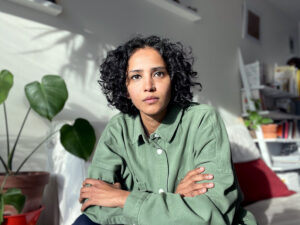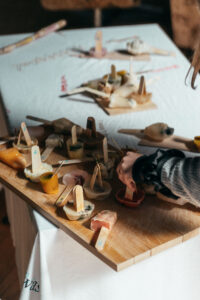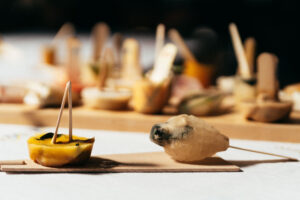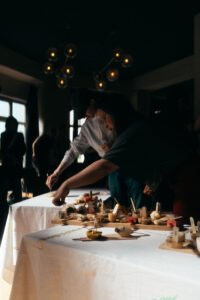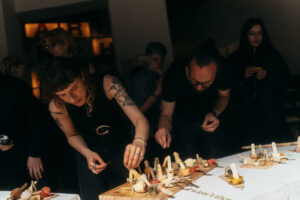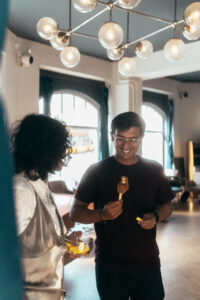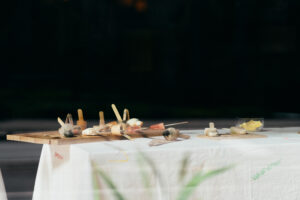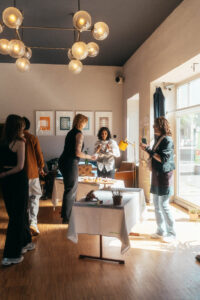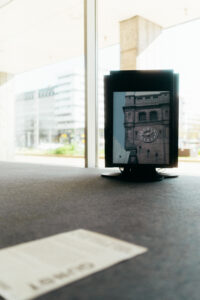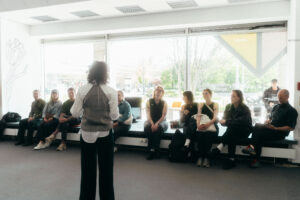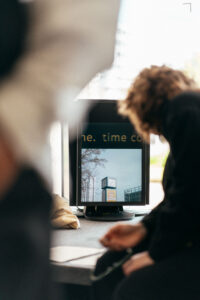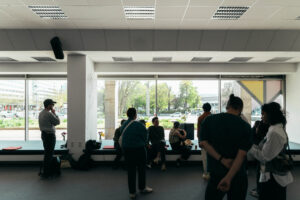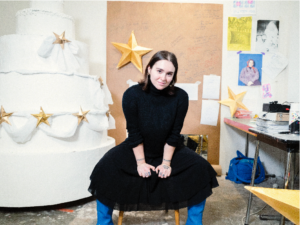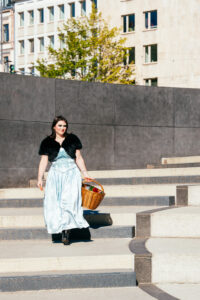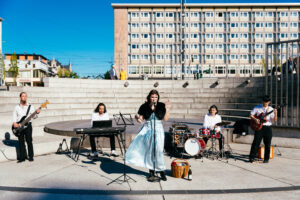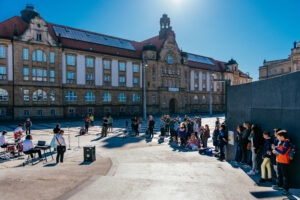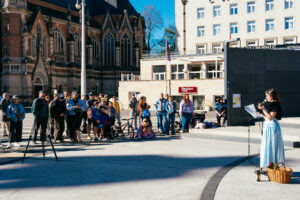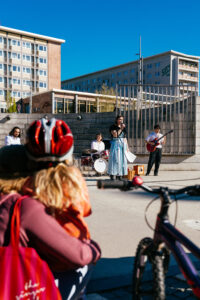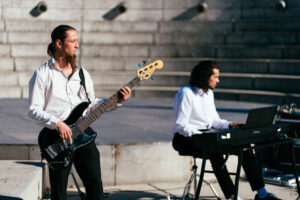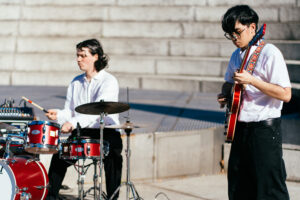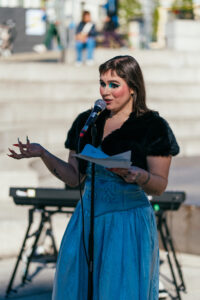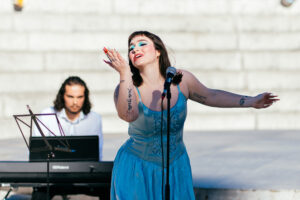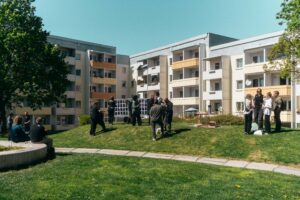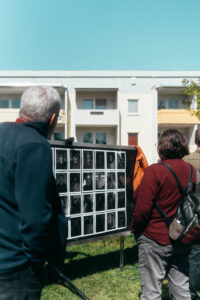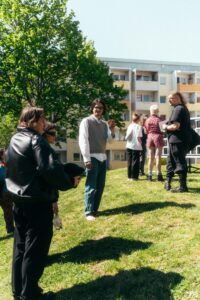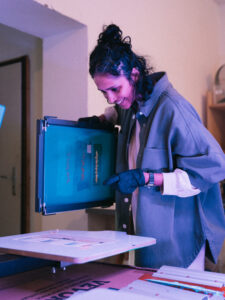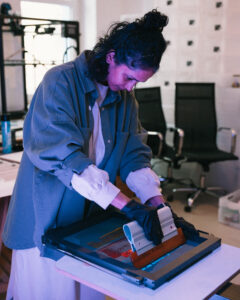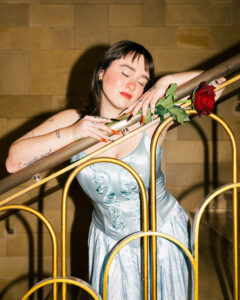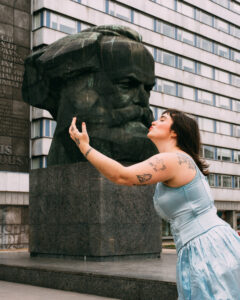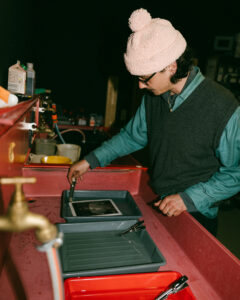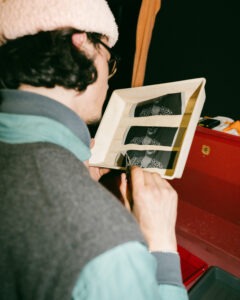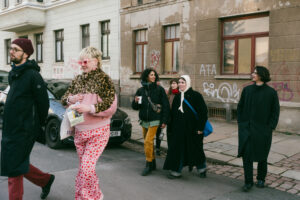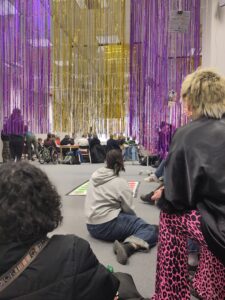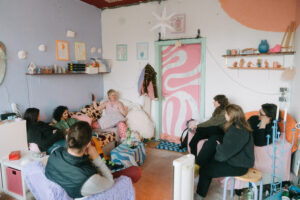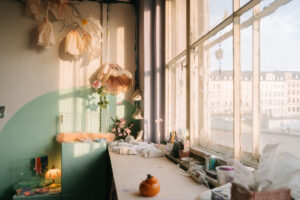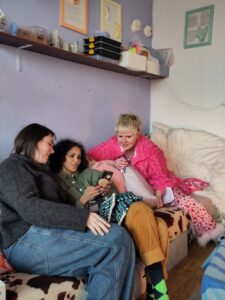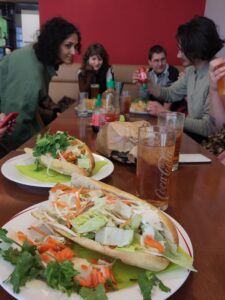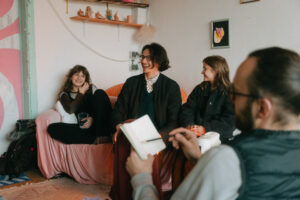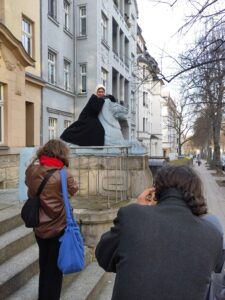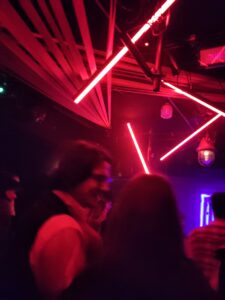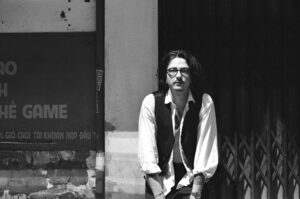Since their arrival in Chemnitz, Shubhangi Singh and Maja Simišić have intensively networked with the city and its inhabitants. For them, space, time and what happens in between are the starting point for new discoveries and artistic considerations.
Shubhangi Singh continued her practice of lingering and taking notes in public spaces and came across the rotating clocks in the city centre of Chemnitz. These clocks are no longer actually functional timepieces, but are used as advertising media. In the end, however, they often remain empty. A cuboid with spaces for large posters beneath the clocks rotates slowly in an anti-clockwise direction, which for Shubhangi Singh makes them a symbol of the shifting and reinterpretation of public time and space. Her reflections revolve around the political dimension of public clocks, which for her have always reflected power structures – be it through the church or science, which determined time. For her, these clocks are not only relics of the past, but also a form of control that creates a space that is public and yet controlled.
For several years, Shubhangi Singh has been exploring the connections between (colonial) botany and science and their relationship to contemporary war production. To this end, she has also networked with the Botanical Garden in Chemnitz. She is interested in the investigation of duplicates within plant samples as well as counterfeiting and fabrication in colonial sciences. She wonders which characteristics make a sample a duplicate and what constitutes an “original” in botany. This knowledge could perhaps also open up new perspectives on the logic of people and nationalities.
For Maja Simišić, it is above all the vacant buildings in the city that she repeatedly addresses in her thoughts. There are numerous vacant buildings in Chemnitz, which is often less the case in large cities. In the metropolises, studio spaces are hardly affordable and space for art projects or flats is hard to find. For Maja Simišić, vacancy is not only a sign of decay, but also of opportunity. Although it has negative aspects for Chemnitz because it shows that there is a lack of people to revitalise these spaces, there is also hope that not everything is full yet – which leaves room for ideas and creative projects.
The artists’ interventions, which they will be presenting from 19 April, deal with these issues and invite people to question and redesign public spaces. It is not about definitive answers, but about a questioning debate.
The interventions will be accompanied by Valentin Mici, who has lived in Chemnitz for over 10 years now and brings his own perspective on the city and the project. Valentin is in the process of taking portraits of people on the Sonnenberg, which will then be developed and become part of a small exhibition in public space and a joint discussion in the neighbourhood.
Join us and let us invite you to be thereon 19 April at 4 pm at Lokomov (Sonnenberg). We look forward to seeing you there.
Stay tuned for more impressions from the ongoing process!

